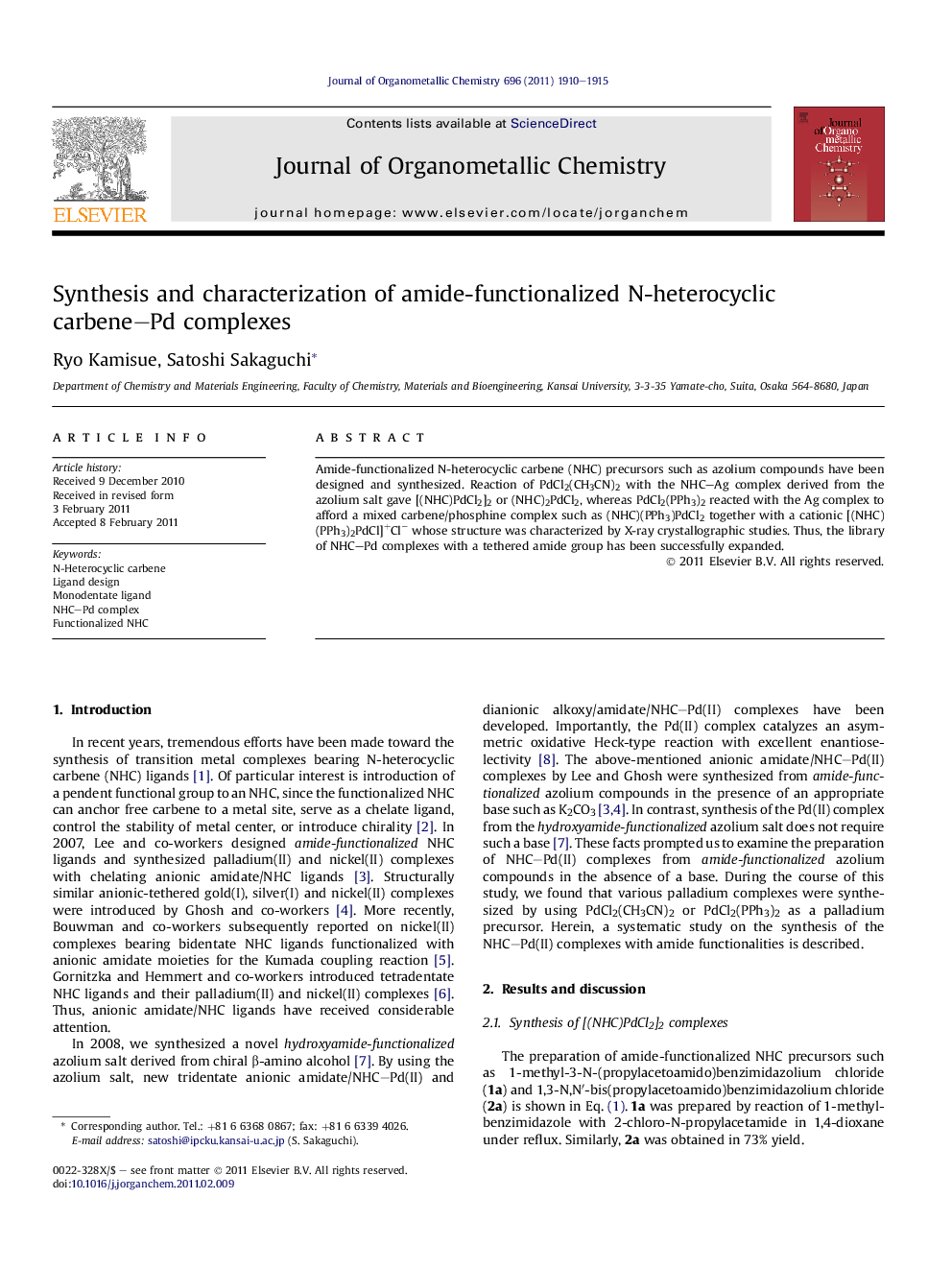| Article ID | Journal | Published Year | Pages | File Type |
|---|---|---|---|---|
| 1324438 | Journal of Organometallic Chemistry | 2011 | 6 Pages |
Amide-functionalized N-heterocyclic carbene (NHC) precursors such as azolium compounds have been designed and synthesized. Reaction of PdCl2(CH3CN)2 with the NHC–Ag complex derived from the azolium salt gave [(NHC)PdCl2]2 or (NHC)2PdCl2, whereas PdCl2(PPh3)2 reacted with the Ag complex to afford a mixed carbene/phosphine complex such as (NHC)(PPh3)PdCl2 together with a cationic [(NHC)(PPh3)2PdCl]+Cl− whose structure was characterized by X-ray crystallographic studies. Thus, the library of NHC–Pd complexes with a tethered amide group has been successfully expanded.
Graphical abstractAmide- and bis(amide)-functionalized azolium compounds have been designed for synthesis of NHC–Pd(II) complexes 1–4. The present protocol provides efficient access to a wide variety of highly desirable NHC–Pd(II) complexes.Figure optionsDownload full-size imageDownload as PowerPoint slideHighlights► Amide-functionalized NHC precursors have been designed. Several distinct types of complexes such as [(NHC)PdCl2]2, (NHC)2PdCl2, (NHC)(PPh3)PdCl2, and [(NHC)(PPh3)2PdCl]+Cl− were synthesized. ► Structure of some complexes was characterized by X-ray crystallographic studies. ► The library of NHC–Pd complexes with a tethered amide group has been successfully expanded.
